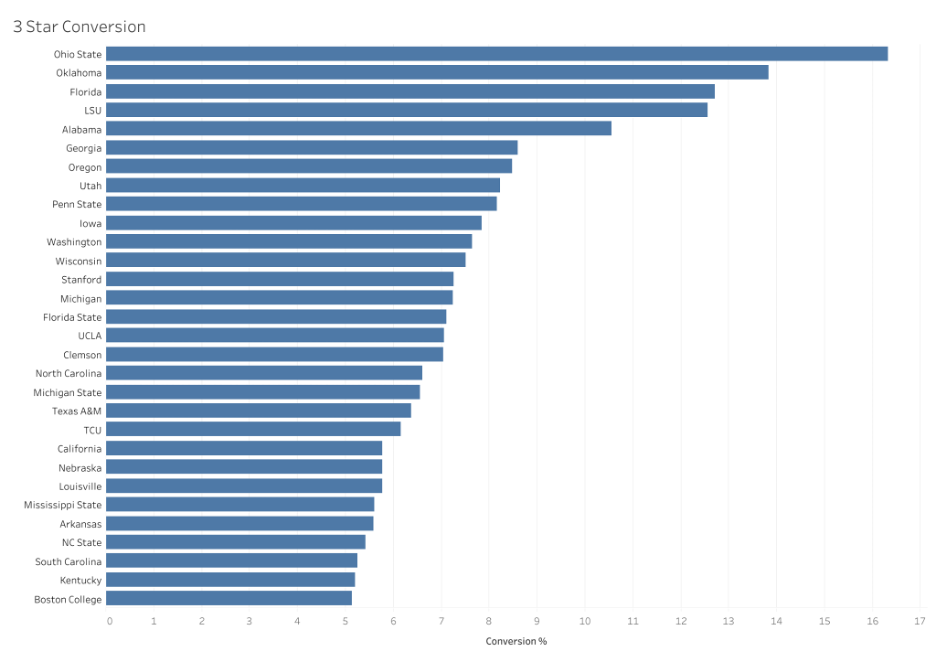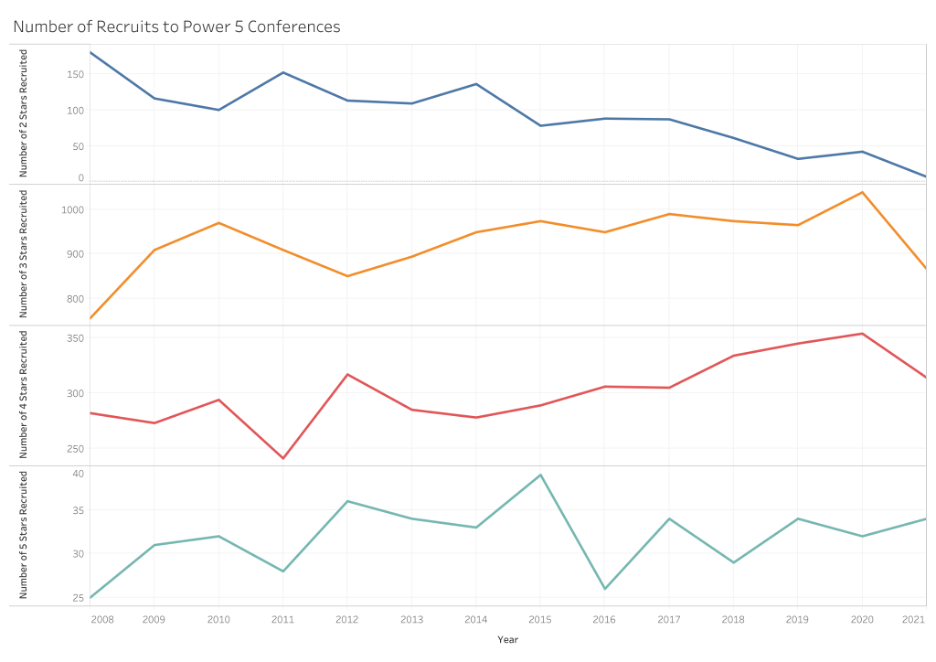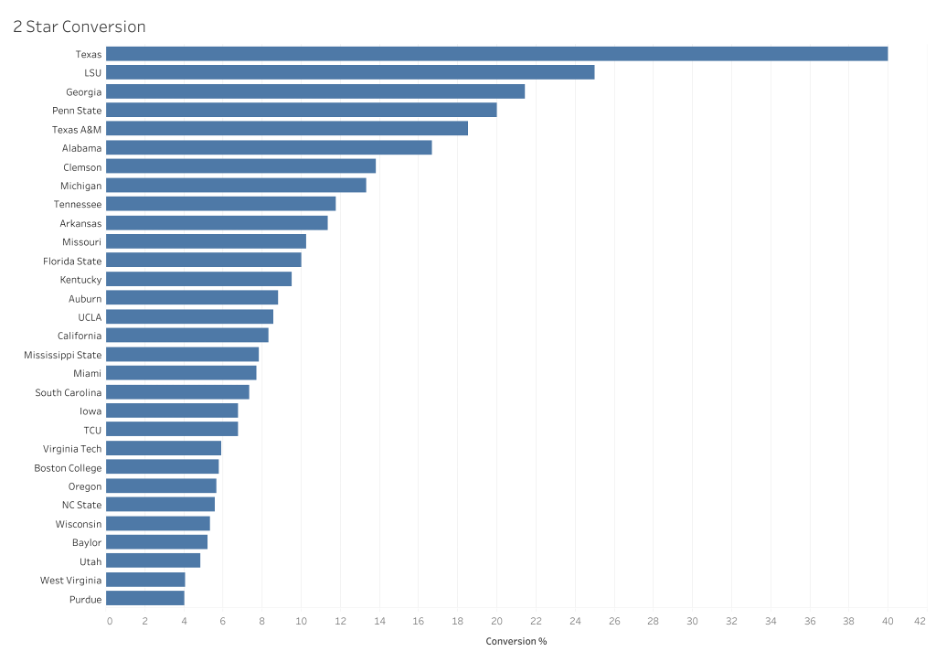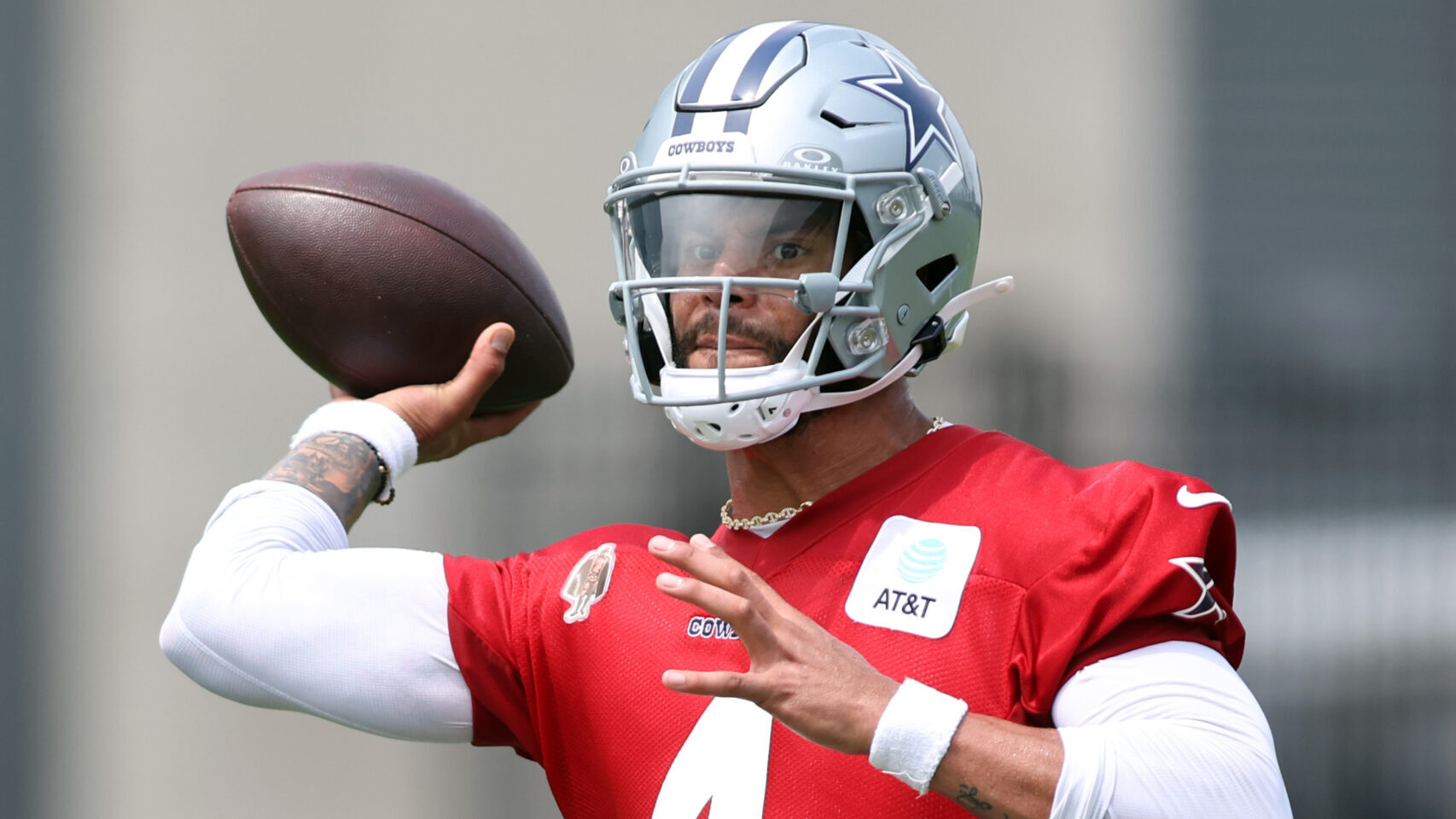Analysis
6/14/22
4 min read
Which Colleges Are Best at Developing Low-Star Recruits Into NFL Prospects?
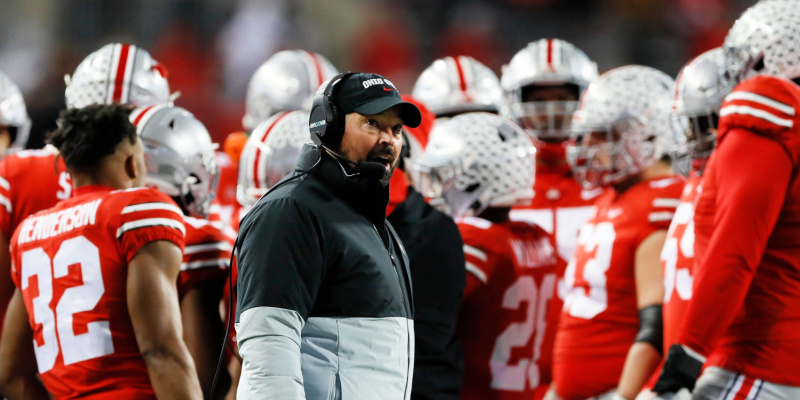
While conversations about college football recruiting typically revolve around which 5-star prospects will play where, few schools are truly able to compete with the likes of Alabama, Ohio State and Texas A&M for the nation’s top prospects on a yearly basis. Other programs that may have smaller recruiting budgets or less clout are forced to focus their efforts on finding lesser talents who can be developed into ideal program fits.
In an effort to identify which programs are best at developing players who were less sought out as recruits, we analyzed the conversion rate of high school prospects to the NFL draft, specifically looking at players seen more as “projects.” We wanted to understand which colleges were the most successful at turning 2- and 3-star recruits into drafted NFL players over the past 10 years.
Methodology
We begin by collecting selections for the NFL Draft from 2012 until now, including the college that they came from. We then use 247 Sports to get the star rating for each drafted player.
Using the College Football Database (CFBD), we can collect rosters from 2008 until 2019 in order to roughly account for the minimum number of years a player will have to be in college before he is draft eligible. We can run through this dataset, assigning the number of stars each player received out of high school and then adding a check if they had been drafted, or a cross if they hadn’t. From this, we can then calculate percentages per college for their respective conversion rates of 2-,3-,4- and 5-star recruits.
For this study, we focused specifically on Power 5 programs that have been best at developing lower-level recruits into stars.
Results
The 247 Sports definition of a 3-star recruit is a “possible NFL player long-term.”
In that sense, a 3-star conversion to a draft pick represents significant success for the program.
These 3-star recruits are expected to have a positive impact in the Power 5 conferences, but their ability to make it to the NFL is up in the air, so for a college to be able to train a player of this rating to the point that teams in the NFL believe he can be impactful for them represents an ability in a program to both locate and transform these athletes.
We also know that 3-stars also make up the highest number of recruits in the Power 5, so it’s important for a conference to know exactly which ones they believe can be successful in the long-term.
Surprisingly enough, the schools that have clearly shown this ability and headline our conversion chart are Ohio State, Oklahoma, Florida, LSU, and Alabama — schools that also regularly compete for the top 4- and 5-star talents. For 3-star conversion, our median is 5%, the 25th percentile is 3.32% and the 75th percentile is 7.05%.
While these numbers might seem low, it’s worth considering how many recruits are brought in by Power 5 schools each year. Recruits at the 3- and 4-star level make up most of the Power 5, with an average of 900 3-stars moving from High School to the Power 5 each year.
Meanwhile, 247 Sports defines its 2-star recruits as “prospects that we consider to be FBS-level players with very limited NFL potential,” so the conversion from 2-star player to the NFL draft is very significant here.
A clear issue that we suffer from is that there simply aren’t that many 2-stars being recruited into the Power 5 conferences. Texas leads this chart by over 14% over second-place LSU, but the fact that there are such few plays in these numbers is something we have to keep in mind. It also explains why the summary statistics are higher than that of the 3-star chart, as we have a median of 5.19%, a 25th percentile of 2.63% and a 75th percentile of 8.82%.
Click here to find the Tableau dashboards, along with similar tables for 4- and 5-star recruits.

